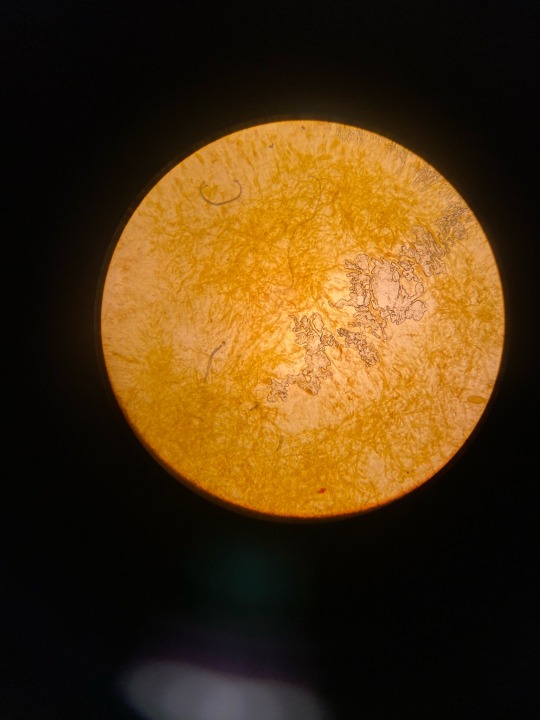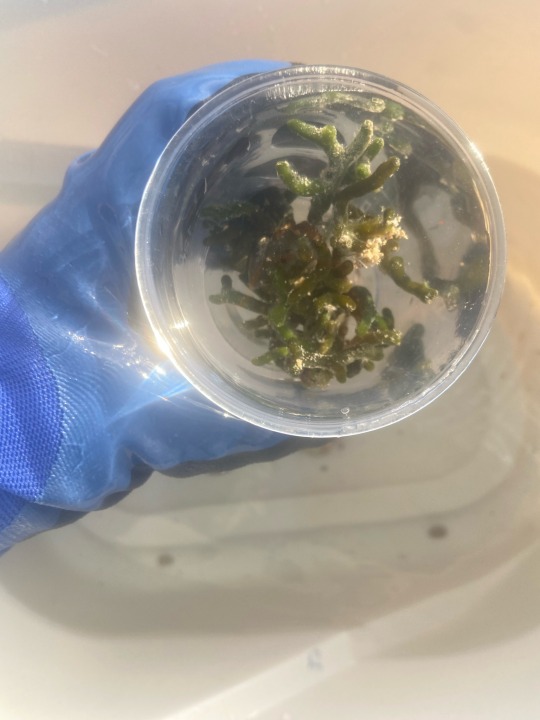#Codium edule
Text





#marine life#marine biology#phycology#limu hoard#herbarium daily#herbarium#digital herbarium#Codium#Codium edule#tropical algae#green algae
12 notes
·
View notes
Text
Characterization of Teatina Coast Marine Habitats (Central Adriatic Sea) toward an Integrated Coastal Management- Juniper Publishers
Abstract
The Adriatic Sea represents a vulnerable ecosystem and need an Integrated Coastal Management to protect, conserve and manage the coastal and marine areas. This preliminary work proposes a local case study aimed to the characterization of coastal marine habitats along Teatina coast (Abruzzo, central Italy), carrying out 11 transects parallel to the coastline. Moreover, the presence of sea turtles and cetaceans has been estimated by the analysis of specimens stranded and included in the GeoCETUS database of Centro Studi Cetacei onlus. The results show that the study area has a considerable marine biodiversity and a sustainable management is urgent for preserving the habitats and associated species. As first step the Nature 2000 network should be implemented by including the marine areas in front of each terrestrial SCIs and Natural Reserves, to create some marine protected areas along Teatina coast with the aim to match the socio-economic needs of the territory and the conservation of natural habitats. Our results only represent a first step and further socio-economic analysis should be implemented to establish an integrated management plan together with the regional authorities.
Keywords: Bionomic characterization; Centro studi Cetacei onlus; Coastal environment monitoring protocol; Coastal habitats; GEOCETUS database; Marine habitats; Nature 2000 network
Introduction
In the Mediterranean Sea, the Adriatic is the most productive basin hosting endemic species and marine mammals, sea turtles, seabirds, fishes and invertebrates, and also the nursery, spawning, and foraging areas [1]. The overexploitation of resources and the increasing of human activities on the coastal areas from the fifties to the present day [2] have impacted the shallow water benthic communities modifying and impoverishing the marine habitats [3]. Moreover, the erosion processes involve both the sandy beaches and the rocky coasts losing important coastal and marine habitats and species [3]. Furthermore the description and the distribution of Adriatic benthic communities have been studied on a larger and a local scale [4-6] but the information about marine biocoenosis and biodiversity in the Teatina coast (Abruzzo, central Italy) now is poor and not exhaustive to structure management programs. In the central Adriatic Sea, the Teatina coast represents a particularly environment composed by shallow rocky cliffs generating pebble beaches alternated by sandy beaches. Along this coast there are promontories too, such as Punta Ferruccio, Ripari di Giobbe, Punta Acquabella e Punta Aderci [7]. Sandy beaches are characterized by established dunes and incipient dunes especially occur at the southern part of the Teatina coast. The marine substrates are characterized by seagrass habitat (Cymodocetum and Zosteretum), the rocky- algal reef and unvegetated sand habitats; the Posidonia oceanica seagrass beds are present only in the southern Adriatic Sea at depth greater than 20 meters [8].
The aim of our work is to improve the knowledge about marine biodiversity and EU habitats and associated species along Teatina coast (Abruzzo, central Italy) for promoting a sustainable management of such resources, as required by European Commission to implementing the marine Nature 2000 sites (EU-Pilot 83/16/ENVI case) according to the criteria identified by Annexex II and III Habitat Directive 92/43/CEE.
The study of the marine habitats was carried out through the distribution of sampling stations along 11 transects of 500 meters parallel of coastline between the municipalities of Ortona and Vasto (central Italy) from -1 to -10 meters in depth at natural rocky shores and associated ichtyofauna. In each station the sampling was carried out through visual census method (specimens/minutes), standardized by Coastal Environment Monitoring Protocol (CEM) with the cooperation of researchers, scuba divers and managers of the coastal/marine preserved areas (https://www.reefcheckmed.org/english/underwater- monitoring-protocol/). For each transect, was recorded the presence/absence, the number and frequency of specimens of guide species for marine environment [9,10]. Finally, were identified the marine habitats [11] and the Biotopes CORINE [12] and the EUNIS [13] typologies.
Data of sea turtles and cetaceans stranded along Teatina coast were collected in GIS format in the GeoCETUS website (http://geocetus.spaziogis.it/) by the Centro Studi Cetacei onlus CSC (Cetacean Study Centre-onlus), established by the Museum of Natural History of Milan in October 1985 by several researchers from the Italian Natural History Museum and other Italian scientific institutions and now responsible of the Recovery Center for sea turtles 'Luigi Cagnolaro' on Pescara, central Italy [14,15].
Discussion
Marine substrates at -7/-10 meters in depth showed well-calibrated fine and silty sand in quiet environments of Mediterranean Sea with association of seahorse grass Cymodocea nodosa (EUNIS 4.5131) referred to sandbanks (EC habitat code 1110) in continuous with estuaries (EC habitat code 1130) of the largest rivers along the Teatina coast (Sangro, Sinello) in contact with riparian woods with Salix alba and Populus alba (EC habitat code 92A0) [16,17].
The benthic populations found in sandy substrates are especially endobionts, as bivalves Tellina sp, Donax trunculus, Chamalea gallina, Cardium edule, Ensis ensis, Solen vagina, Mactra corallina, and the gasteropods Aporrhais pes-pelecani, and the echinoderms Echinocardium cordatum and Astropecten sp.
Infralittoral rock included habitats of bedrock, boulders and cobbles which occur in the shallow subtidal zone and typically support rhodophyceae communities as Corallinetum elongatae association (EUNIS A3.11) with bio-concretion on shady vertical rocks at Punta Ferruccio, Ripari di Giobbe and Punta dell'Acquabella and Punta Aderci. The Halymenia floresia association with specimens up to 15cm in length is more representative in the Punta Aderci site [18]. In the sheltered and calm waters sites other seaweeds species occurred, such as Ulva sp., Peysonnelia sp., Codium bursa, C. fragile and Dictyota dichotoma.
An important rocky habitat is Sabellaria spinulosa reef (EUNIS A3.6721) more representative along the coast with bio-concretion colonized by Mytilus galloprovincialis facies, with seaweeds, snakelocks anemone Anemonia viridis, bivaleves Ostra edulis and Gastrochaena dubia, gasteropods Trunculariopsis trunculus and Haliotis tubercolata, branching bryozoans Schizoporella errata, echinoderms Arbacia lixula, Sphaerechinus granularis and Paracentrotus lividus and crustaceans Scyllarus arctus, Palaemon elegans and Inachus sp. Moreover, a diversified icthyofauna was sampled: Parablennius gattorugine, P. rouxi, Diplodus vulgaris, D. annularis, Scorphaena porcus, Coris julis and Chromis chromis with an decreasing gradient of species number from North to South and a better status of conservation of Punta Acquabella and Ripari di Giobbe reef (Table 1).
In addition, the presence and the distribution of the cushion coral Cladocora caespitosa, the gorgoniidae Leptogorgia sarmentosa (both Least Concern for IUCN Red List), the date mussel Lithophaga lithophaga (All. IV Hab. Dir.) and the mussel Pholas dactylus (Vulnerable for IUCN Red List) were investigated and the results showed a decrease of their abundance from North to South, except to L. lithophaga with an high presence in the Punta Aderci reef up to 5-6 meters deep and in the Punta Acquabella in co-presence with few individuals of the mussel P dactylus. The gorgoniidae L. sarmentosa with four colonies (0,4 spec./min) only occurred in the Ripari di Giobbe site while cushion coral Cladocora caespitosa is especially present in the northern side of the Teatina coast with a maximum of 33 specimens (0.62 spec./min) in the Acquabella reef.
Results showed an high marine biodiversity in species and in number of specimens, especially in the northern side of the study area and a decrease in the southern part; on the contrary to the terrestrial habitats and species are mainly concentrated in the SCIs which are larger in the southern side, as on Torino di Sangro and Vasto [7,16,17].
It worth to note that a dangerous invasive species was found, the veined whelk Rapana venosa, which is homogeneously distributed along whole Teatina coast.
The CSC along the Teatina coast revealed the presence of the sea turtle Caretta caretta dead or alive and of common small cetaceans as the striped dolphin Stenella coeruleoalba and the bottlenose dolphin Tursiops truncatus, confirming the presence in the central Adriatic Sea of important nursery and feeding habitats [19], as showed in the Table 2. Furthermore, in the southern Teatina coast were stranded some rare species for a small basin like the Adriatic Sea, that is the sperm whale Physeter macrocephalus and the fin whale Balaenoptera physalus [20,21] (Table 2).
Conclusion
The Adriatic Sea represent a very vulnerable ecosystem as it is subjected to continuous pressures by the touristic, fishing, and oil activities compromising the habitats and associated species. Therefore it is necessary to protect, conserve, and manage the coastal and marine areas and their communities [22] with an Integrated Coastal Management ICZM (http://ec.europa.eu/ environment/iczm/) that involves a collaboration between the different stakeholders to manage the environmental and cultural heritage in a sustainable way. Considering the terrestrial Natura 2000 network along Teatina coast (Figure 1) and evaluating our preliminary characterization of marine habitats in the study area we suggest to implement the marine Nature 2000 network including the marine area in front of each terrestrial SCIs and Natural Reserves, to create a series of marine protected areas along Teatina coast, with the aim to match the socio-economic needs of the territory and the conservation of natural habitats. Our results only represent a first step and further socio-economic analysis should be implemented to establish an integrated management plan together with the regional authorities.
To Know More About Journal of Oceanography Please Click on: https://juniperpublishers.com/ofoaj/index.php
#Marine biology#Marine litter#Marine ecology#Marine conservation#Juniper Publishers PubMed Indexed Article
5 notes
·
View notes